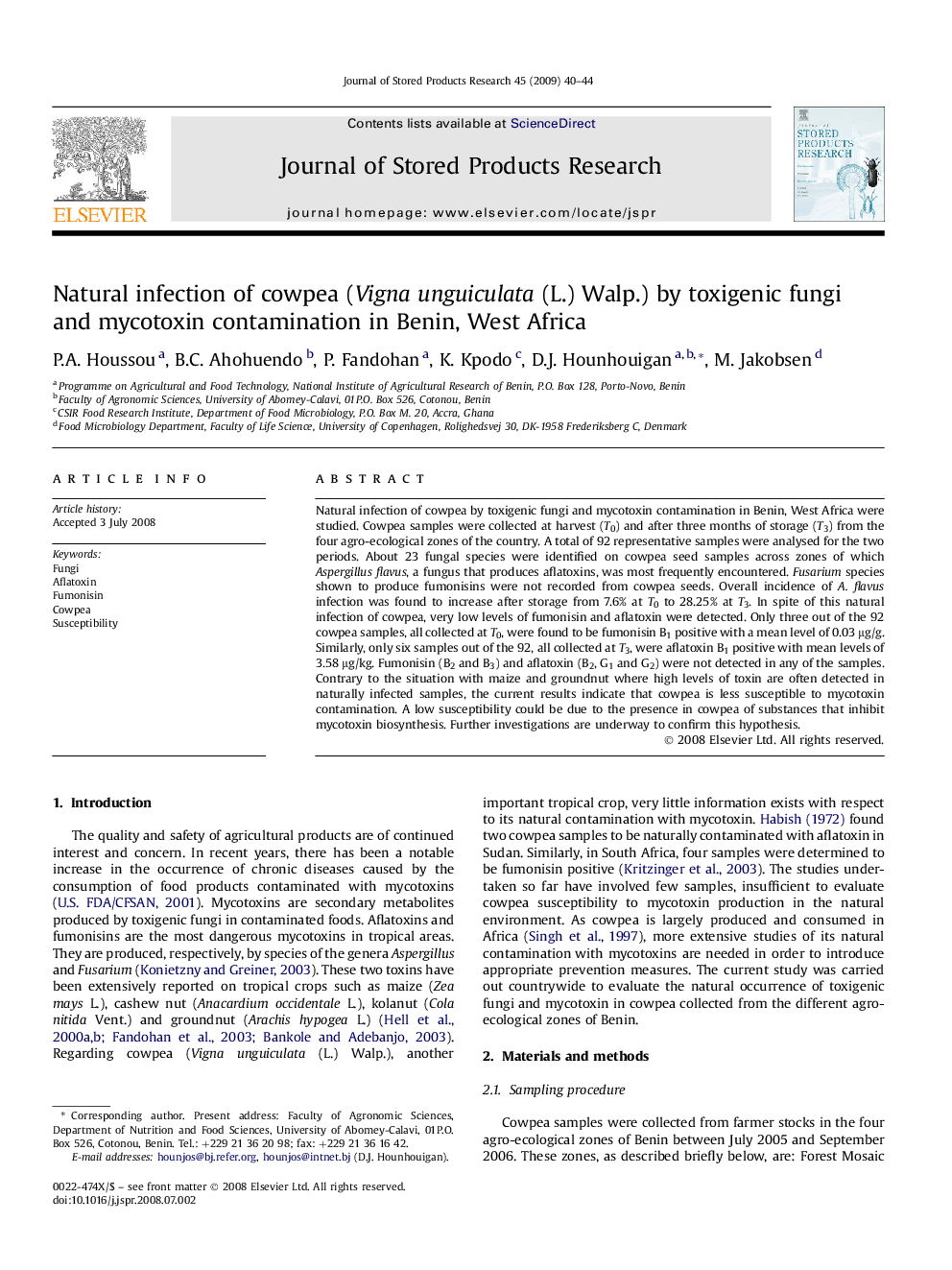| Article ID | Journal | Published Year | Pages | File Type |
|---|---|---|---|---|
| 4517461 | Journal of Stored Products Research | 2009 | 5 Pages |
Abstract
Natural infection of cowpea by toxigenic fungi and mycotoxin contamination in Benin, West Africa were studied. Cowpea samples were collected at harvest (T0) and after three months of storage (T3) from the four agro-ecological zones of the country. A total of 92 representative samples were analysed for the two periods. About 23 fungal species were identified on cowpea seed samples across zones of which Aspergillus flavus, a fungus that produces aflatoxins, was most frequently encountered. Fusarium species shown to produce fumonisins were not recorded from cowpea seeds. Overall incidence of A. flavus infection was found to increase after storage from 7.6% at T0 to 28.25% at T3. In spite of this natural infection of cowpea, very low levels of fumonisin and aflatoxin were detected. Only three out of the 92 cowpea samples, all collected at T0, were found to be fumonisin B1 positive with a mean level of 0.03 μg/g. Similarly, only six samples out of the 92, all collected at T3, were aflatoxin B1 positive with mean levels of 3.58 μg/kg. Fumonisin (B2 and B3) and aflatoxin (B2, G1 and G2) were not detected in any of the samples. Contrary to the situation with maize and groundnut where high levels of toxin are often detected in naturally infected samples, the current results indicate that cowpea is less susceptible to mycotoxin contamination. A low susceptibility could be due to the presence in cowpea of substances that inhibit mycotoxin biosynthesis. Further investigations are underway to confirm this hypothesis.
Related Topics
Life Sciences
Agricultural and Biological Sciences
Agronomy and Crop Science
Authors
P.A. Houssou, B.C. Ahohuendo, P. Fandohan, K. Kpodo, D.J. Hounhouigan, M. Jakobsen,
